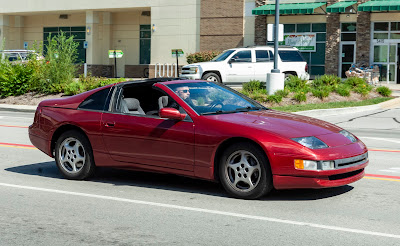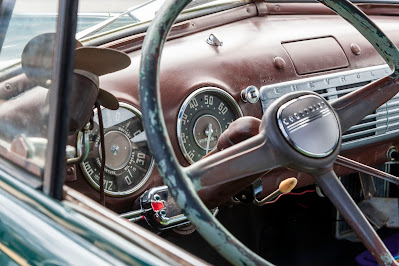A 1971 Dodge Demon in Go-Mango, featuring one of the great giant-slayer small blocks of the Muscle Car Era, Mopar's 340cid V-8.
The 340 was designed to be a drag strip terror from the jump off. Chrysler engineers started with the 318 cubic inch LA-series small block and bored the cylinders out to 4.04", which made it pretty over square relative to the 3.31" stroke. They gave it heads with enormous valves and ports, forged aluminum pistons, a shot-peened forged steel crank, and a racy cam. The single-4bbl version of the 340 had a 10.5:1 compression ratio and was ridiculously underrated at a claimed 275bhp SAE Gross horsepower.
How do we know it was underrated? Well, there are two big clues.
First of all, when you stuck it in one of these little A-body coupes and didn't weigh it down with a bunch of options, they were capable of flirting with legit high thirteen quarter mile times off the showroom floor...on bias ply street tires. That was normally the province of the more wild-eyed big blocks.
The other way we know that it was underrated was that in 1972 they went to heads with smaller ports and a lower 8.5:1 compression ratio for emissions and fuel economy reasons, and switched to SAE net horsepower ratings. Somehow this only resulted in a drop to 240 SAE net, indicating that the "275" number had probably been closer to the net output all along.
This one was photographed with a Nikon D800 and 24-120mm f/4 VR zoom lens in October of 2023.




































